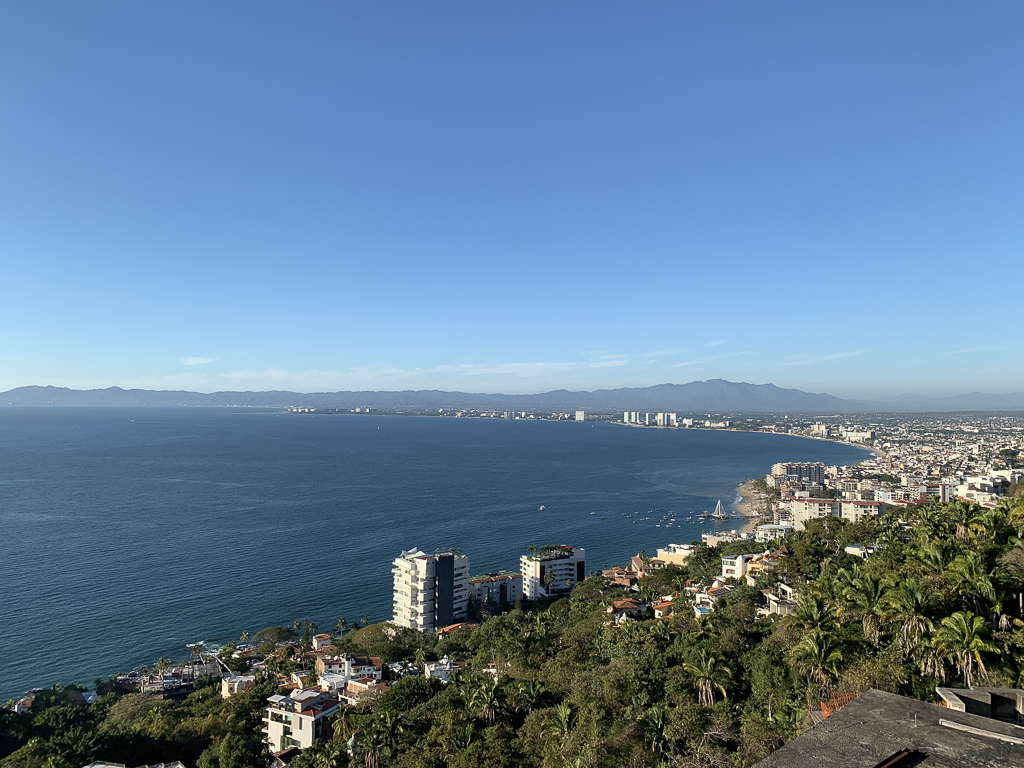
The crossroads of Banderas Bay
We have spent about 2.5 months in Banderas Bay. This was our pay-back time – we had finally reached a place where we did not have to think about leaving soon, did not have to worry too much about the weather, and could just enjoy being there. We needed some stability after months of just continuous change, which started with moving to the boat last August.
Still, we did not just sit in one place, we moved about the bay, both by boat and by other means. We also found time to fly back to Seattle to visit friends and tend to some appointments. And we had friends visiting us. We also had our son and his girlfriend come over. And we did an inland trip to Guadalajara. So, it was busy, but in a different way. We will write about the places we have seen and various experiences in the rest of this post. It’s not all chronological but it all happened between our arrival on Feb 8th and departure on Apr 27th
The Lay of the Land
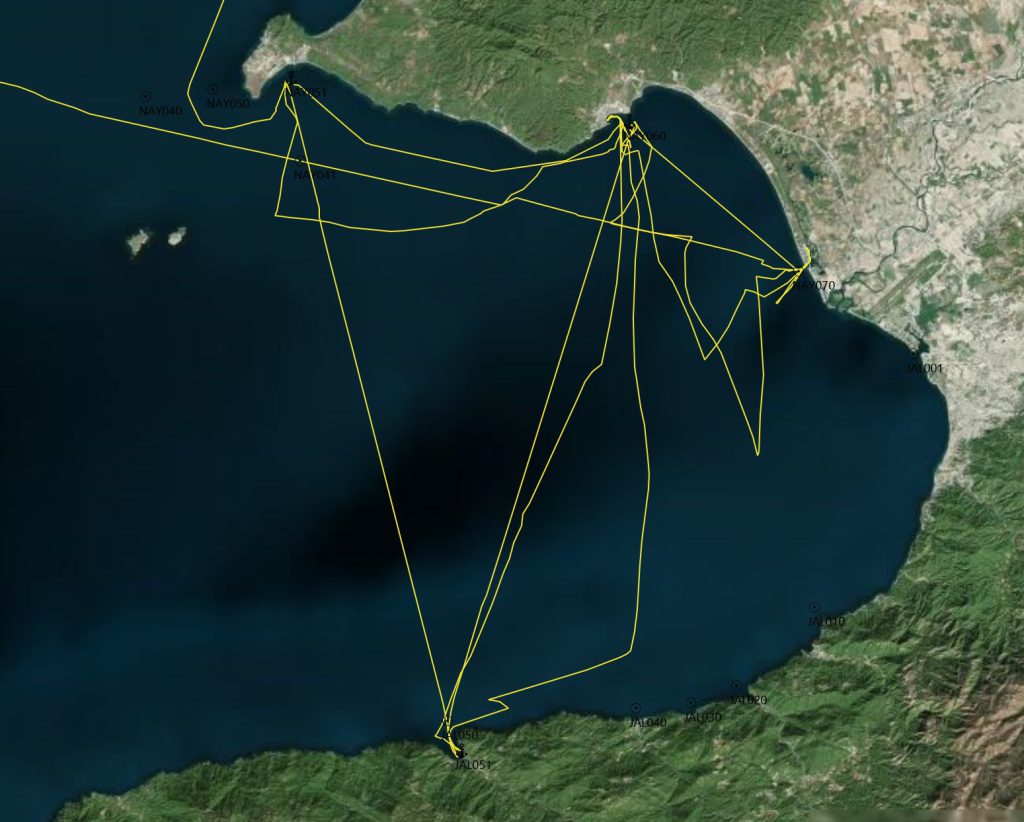
Banderas Bay is a 20-mile-wide bay located on Mexico’s Pacific coast, somewhat south of the entrance to the Sea of Cortez. On the south side, it is protected by a tall mountain range, covered in jungle. That side is sparsely populated, with some places, such as Yelapa, accessible only by boat. On the north side, the land is low and there are several towns there. The middle of the bay’s shore is occupied by Puerto Vallarta – the biggest town and a major tourist attraction here. The beaches there are lined with hotels and cruise ships from the US making it one of their destinations. There is a marina in Puerto Vallarta, but we did not stay there. A bit to the north there is Nuevo Vallarta, an extension of the PV’s hotel zone. Following to the north, there is a section of more traditional and smaller towns – Bucerias, followed by La Cruz de Huanacaxtle. La Cruz is a cruisers’ destination with a large marina and even larger anchorage, one of a few suitable anchorages in the whole bay. At the north tip, there is Punta de Mita, with another section of up-scale hotels.
Banderas Bay is well protected from any major weather happening in the Pacific. Even hurricanes bounce off of the mountain range in the south. It has its own predictable weather pattern – very calm mornings, followed by steady 15-20 k winds from W and NW in the afternoon, calming down again at sunset. That is in the fall/winter/early springtime. In the late spring and summer, it is a wet season, with high temperatures, high humidity, and daily thunderstorms. But we did not stay for that part.
Another major attraction in the area are whales. The humpback whales come here in late fall and winter to give birth and nurse their babies. It is a daily show of whales breaching and slapping and just swimming around.
Banderas Bay is a natural crossroad for cruisers. Boaters come here after coming down the US and Mexican coast, just like we did. Or after spending the hurricane season in the upper Sea of Cortez. Or after traveling up the coast from Panama. They also prepare here for crossing the Pacific to Marqueses in the spring, the so-called Puddle Jump. So, from mid-winter to early spring this is a bustling place, and one can run into many old friends or find new ones here.
Paradise Village, or Nuevo Vallarta

Nuevo Vallarta was our first stop in Banderas Bay. This area is a big hotel zone, developed in the 80s and 90s. Among them, there is a combined hotel and marina resort named Paradise Village. This is where we stayed for a few weeks at first and where we kept the boat while we flew to Seattle for a week. At first, this place overwhelmed us. It is not really Mexico – it is a Zona Americana. You have beautiful, paved streets and sidewalks, hotels, restaurants, pools, and even a little mall with fast-food chain restaurants. The marina is one of the best in Mexico – docks are very well maintained, and at every dock, there is potable water, a pump-out hook-up, and even wired internet. You can just plug in there and never leave. At first, we resisted, but then we figured that this is a great base and a very comfortable place to be in while exploring everything that is around. We just had to remind ourselves to escape the resort every few days and venture around.
One of the first trips we did was on a dinghy up the river. The marina is built on an estuary – a small river entering the ocean. The river is covered in the mangrove forest and populated by crocodiles. We did not find any of them, but we did see lots of iguanas. They sit in the trees and just bask in the sun. There are so many of them we lost count.

But we did enjoy the resort too. There are nice pools, including the lap pool where I could do the morning swim without worrying about crocodiles in the river. Very clean and nice showers. Great ice cream in the mall. At the beach, they have happy hour with 2-for-1 drinks, every day at 5 pm. What to complain about?
Paradise Village is one of the two places where cruisers gather in Banderas Bay. So, we naturally run into some of our long-not-seen friends, and they introduced us to other people and overall, our social life flourished there. It was fun gathering for drinks or dinners or visiting each other’s boats.
By the time we were ready to leave, we really liked this place.
A few practical notes. The marina gets busy in the winter and spring months. If you want to stay there, make reservations early. Their contact info is at paradisevillagemarina.com. You want to talk with Gina, as she is running the show there. With a reservation, you get a spot, but the actual slip assignment will happen when you arrive. Hail the marina on CH16 about 15 minutes before you come and they will tell you where to dock. As I mentioned, the marina is on the river. The entrance is narrow and shallow. There is sometimes a dredger parked in the middle of the entrance and you need to go around it. And there is a lot of traffic, as local tourist boats are coming and going. Just plan ahead and be careful, and check with the marina about the entrance conditions if in doubt.
Once you check into the marina, you need to go and check in with the port captain. Interestingly, each marina location in Banderas Bay has its own port captain, and in theory, you are supposed to check in and check out at each place if you move around the bay. For Nuevo Vallarta, the port captain’s office is on the other side of the river from the marina. The easiest way to get there is by water taxi, which shuttles between the two sides the whole day. It’s 60 pesos per person round trip. 5 minutes ride. Walking, it is about 40 minutes, through the nearest bridge.
To get around, you can catch a taxi in front of the hotel, or you can get a bus. There is a local ATM “Green” bus that goes all the way to the Puerto Vallarta shopping zone. If you want to get to the center of the city, you switch to another bus labeled “Centro”. Or you can take one of the little white vans that carry all the hotel workers. They are called “combi”. They take you to the highway and from there you can catch a bus to Vallarta or the other way to Bucerias or La Cruz. Remember that on a bus you pay when you enter. On a “combi”, you pay when you exit.
Puerto Vallarta

Puerto Vallarta is the first bigger city in Mexico that we liked. It is a touristy place, but if you stay out of the “zona hotelara”, you can find a lot of interesting sights. This was a small fishing village in the 60s, until one day Hollywood people came and made a nearby Mismayola a location for the “Night of Iguana” movie. Famous actors, like Elizabeth Taylor, came and “discovered” Puerto Vallarta. They bought houses and soon others followed. It became a destination for celebrities and then regular folks. But not all has been lost to the new development. If you go a few blocks inland from the Malecon, you will find charming and quiet cobblestone streets, beautiful residences, lots of art stores, and little cafes. Some streets reminded us of some old towns in Europe. If you go further uphill, you can find your way to a view platform built on the hill above the town. It provides spectacular views of the whole town and the bay.
Our friends, who happened to be vacationing in Puerto Vallarta when we arrived, invited us to their hotel. It was a spectacular place, nestled in the hills above the town, with incredible views, infinite pools, and just a great atmosphere. We enjoyed dinner there and had a fantastic evening.
Another trip around PV was to the botanical gardens. To get there take a bus from the Zona Romantica district towards the town of El Tuito. It’s a 30-minute ride up the hills and through a jungle. The gardens are located on a piece of land carved out of the jungle. The flower and tree displays are spectacular. On the grounds, there is a beautiful pavilion where we had lunch. And then we hiked the paths through the jungle leading to a mountain river, where we could cool off a bit. This was one of the best side trips we had while in Banderas Bay.
La Cruz

La Cruz de Huanacaxtle, or simply La Cruz, is a very small town on the northern shore of the Bay, that happens to be a major cruisers hub. The town hosts a large marina, and outside of it, is a large and very popular anchorage. During the peak season, it can be easily 100 boats anchored there. The marina is not as posh as Paradise Village, but it has all the amenities – good docks, good showers, cruisers lounge with fast internet. There is also a major boatyard here and a lot of skilled workers around it to help with any boat problems. It seems that getting into this marina is a bit easier than Paradise Village.
The town of La Cruz is just a little Mexican town, unspoiled yet by large-scale tourism. Aside from cruisers, there is a sizable ex-pat community here, but tourists visiting Puerto Vallarta do not really venture here. The town is easy to get around. It has a large number of very nice, locally owned restaurants, and a very lively music scene. Most of the days, and especially weekends, you can find live bands playing in many of the restaurants. The loudest is usually Green Tomate, on the corner of the main town square. Another of our favorites has been The Treehouse. They invite some good bands and sometimes you even have to pay a cover fee. Another attraction of La Cruz is the Sunday Farmers Market. It starts around 8 am and goes on until 2 pm. It is a large market with a lot of local vendors selling arts and crafts, some food vendors, and an excellent selection of food options. It is well worth the visit, sampling the food, chatting with vendors, and maybe even buying something. The crafts sold at this market are truly authentic.
One thing that La Cruz is lacking is a nice beach. For that, you need to go to other locations, such as Bucerias, or Sayulita.
Bucerias

Bucerias lies halfway between La Cruz and Nuevo Vallarta and has a kind of halfway feel. It is a very Mexican town, like La Cruz, but it is definitely more touristy and more commercial. It has also a very nice beach. It is very lively at night, with many restaurants, street food vendors, and many people just walking around. We enjoyed visiting it. It is an easy bus connection either from La Cruz or from Paradise Village.

Around the bay – Punta de Mita, Yelapa, and South Bay
In April our friends from WA state – Kasia, Sean, and their daughters Kaya and Tosia – came down to see us and experience living on a boat in Mexico. We took them on a boating trip around Banderas Bay, and then they took us to an Airbnb in the south of the bay.
It worked out well, except for one thing – we did not know that the school break in WA happens to coincide with Semana Santa in Mexico. Semana Santa is the Holy Week – the week leading to the Easter holidays. In Mexico, people get most of the week off and tend to go spend it with family in some nice place, like the beaches of Banderas Bay. It got really crowded and noisy everywhere. But we somehow managed through it.
Our trip started at Punta de Mita. This is the north-most end of Banderas Bay. There is a small village there and a lot of luxury resorts. It is an interesting and confusing mix of rural Mexico and opulent western resorts separated by a single street. You can sit in a high-end restaurant and then walk a block and get street tacos. The anchorage was big and very comfortable. But the beach landing was a challenge. Our friends called it “Normandy landing”. We had to get the dinghy through the high surf. We ended up with no casualties, just a lot of water in the dinghy.
Yelapa, our next stop, is 20 miles to the south, on the opposite side of the Bay. It is one of the places where there are no roads and you can get there only by boat. Tourists get delivered by pangas from Puerto Vallarta. The setting is just beautiful. The clear water, the pristine yellow sand, palapas, and mountains with lush vegetation towering above. Behind the palapa restaurants lining the shore is a path along the river, leading through the backside of the village. That part is less touristy, and we could see how people live for real. This path leads to waterfalls higher up in the mountains.
The bay is very deep, and it is challenging to find an anchoring spot there. Locals have set up multiple mooring buoys in the bay to attract boaters. When you approach Yelapa by boat you are greeted by pangas representing local restaurants that also happen to own mooring buoys. They try to entice you to pick their mooring. We had a recommendation from our friends to look for Tito, but his boat was not the one that greeted us. Instead, it was Ricardo. He found us over a mile away from the bay entrance, he was clearly motivated to find a customer. We did not feel like we should start a bidding war between the locals, so we went with Ricardo. He promised a brand-new buoy and a double bow and stern hookup. That would keep us into swell and reduce the rolling at night, which is a problem in Yelapa. The buoy turned out to be indeed brand new and we picked it up, with some challenges due to confusion on who should be doing what – us vs. Ricardo. This is not Catalina Island, where you can watch an instructional video before picking up a buoy. The mooring was close to the shore and the stern line looked somewhat flimsy. Ricardo assured us it is well secured. We backed up on the buoy and it held, so we decided to stay, especially since the forecast was for light winds.
Well, at night the wind shifted to a land breeze and we got woken up by an anchor alarm. Turns out we pulled out the stern mooring and swung 180 deg around the main buoy. Thankfully that one was still holding. The stern mooring turned out to be a small anchor, of the size we use for our dinghy. I am glad we tested the main mooring, as without it I would have completely doubted its security. We slept intermittently through the rest of the night, woken up every few hours both by significant rolling of the boat and by worries of the mooring still holding.
We explored the rest of the south side of Banderas Bay from the shore. There are multiple small bays and small villages on that shore along the route coming from Puerto Vallarta. We took a bus and hopped off and on again in some of them. I am sure they are nice places but during the Semana Santa they were just overcrowded and it was hard to fully enjoy them.
Sayulita
The town of Sayulita is not within Banderas Bay, but it is just a short bus ride away. It is located north of the bay, facing the open Pacific waters. Because of that, it has clear waters and nice surf. The beach there is spectacular, and we enjoyed walking its full length. The beach attracts a lot of tourists, but if you walk a bit further out, there is plenty of room.
The town has the feel of a hippy surfing town. There are yoga studios, healthy eateries, beach bars, and a lot of people walking around with surfboards. This is also a place to take surfing lessons if you are so inclined. We spent a lot of time just walking the streets, and sampling food and drink options. The town may at times feel a bit too busy, but it is enough to walk a few blocks away from the main street and things get better.
Moving on
After thorough exploration of the bay, it is time to move on. We will start heading back north and into the Sea of Cortez.

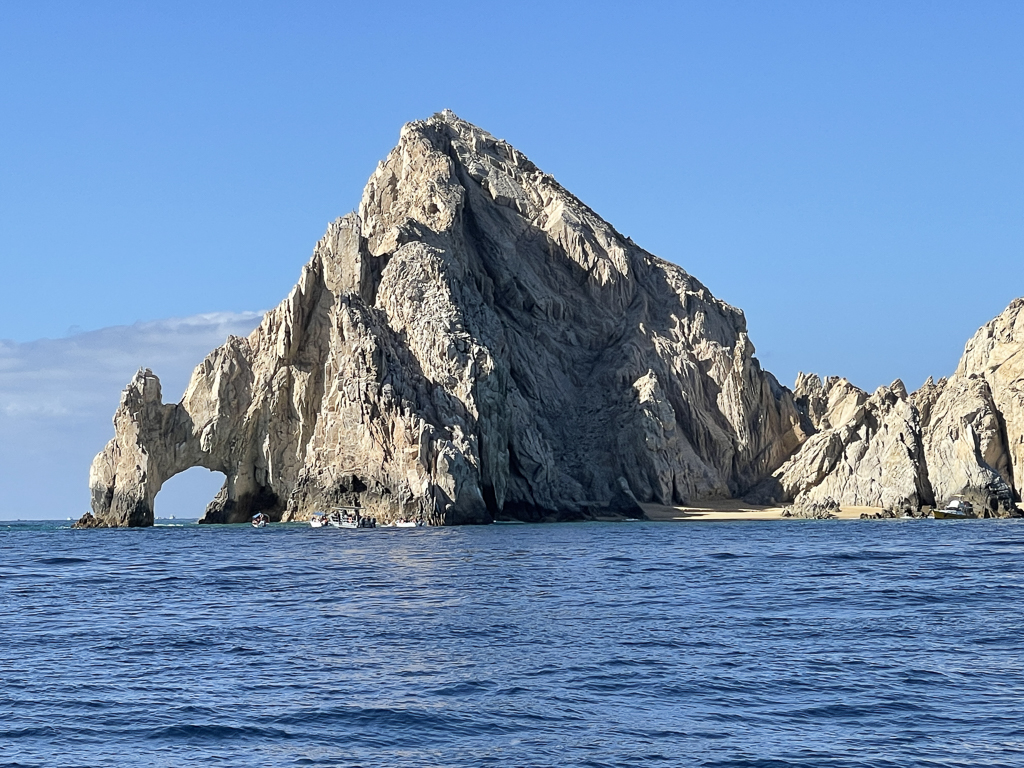

























































































































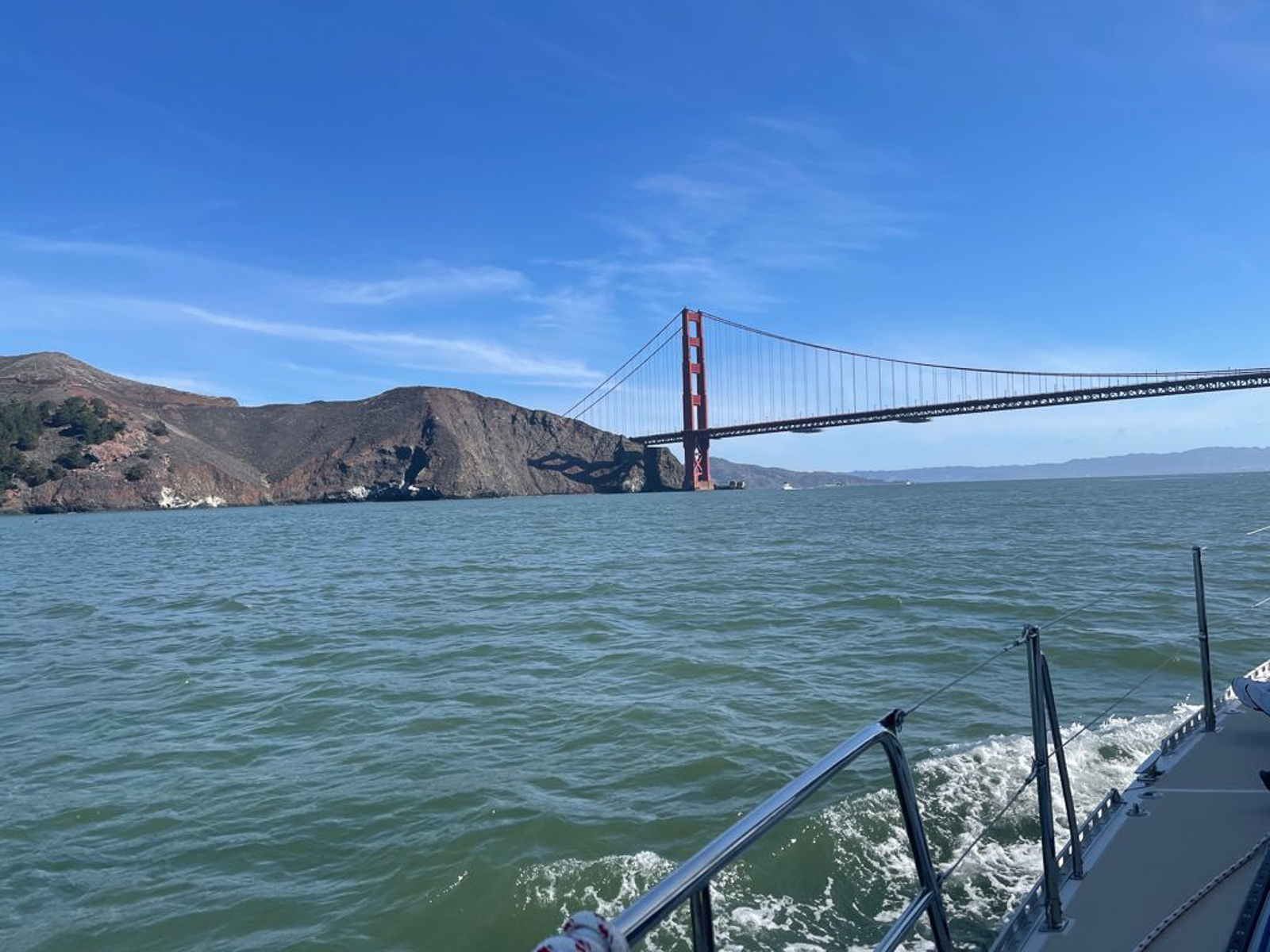
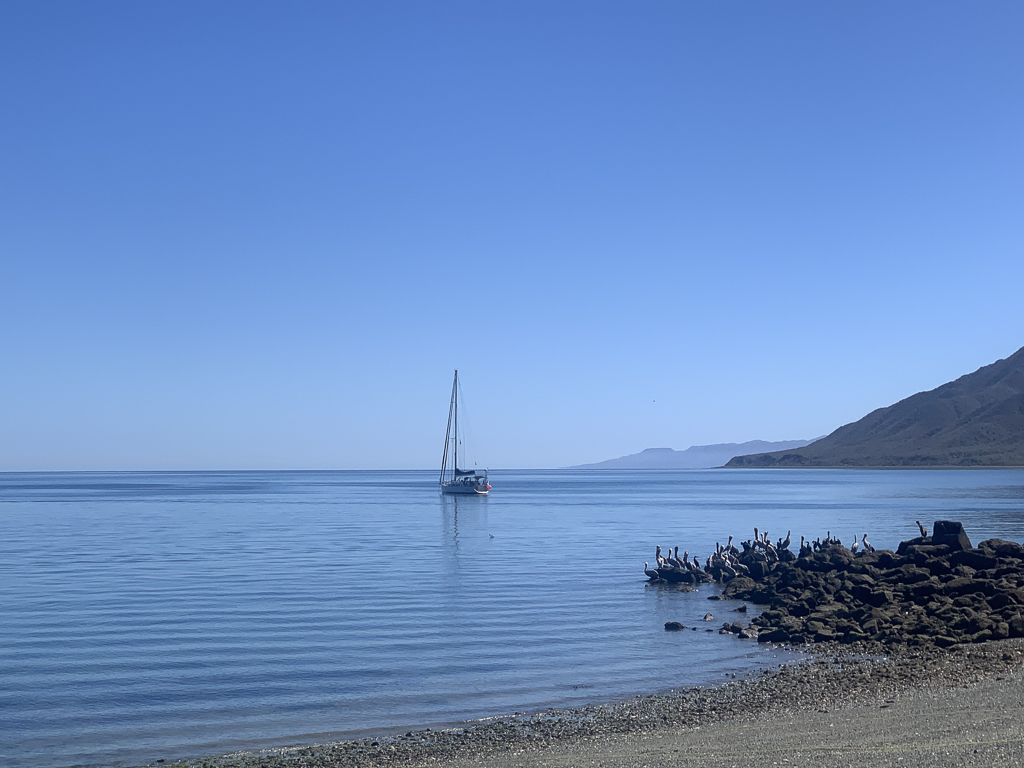
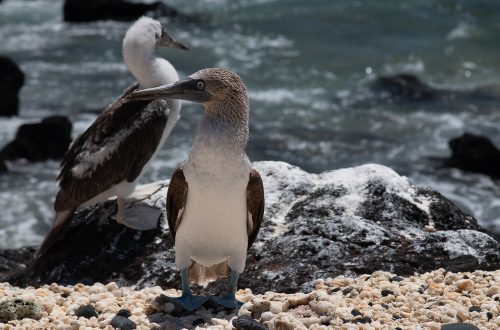
One Comment
Pingback: